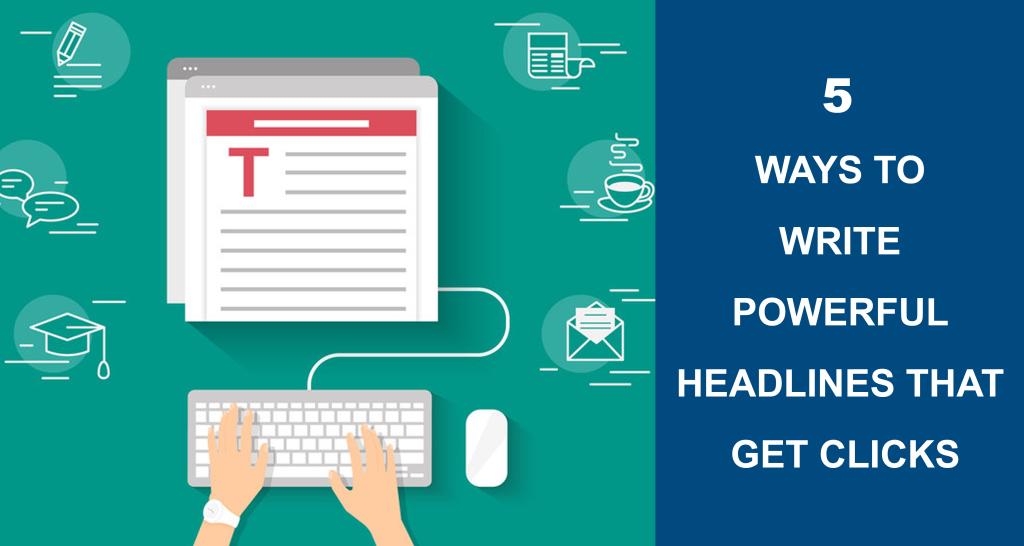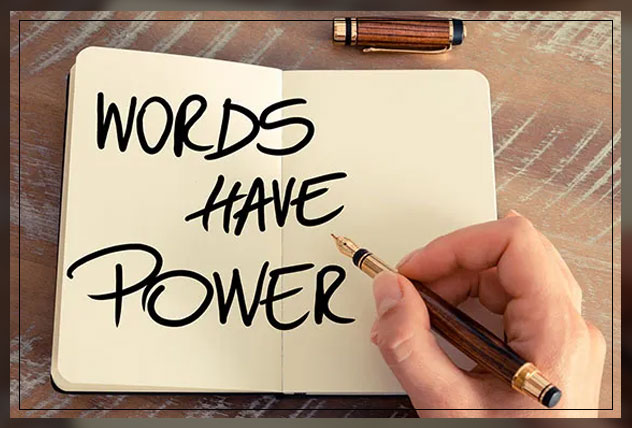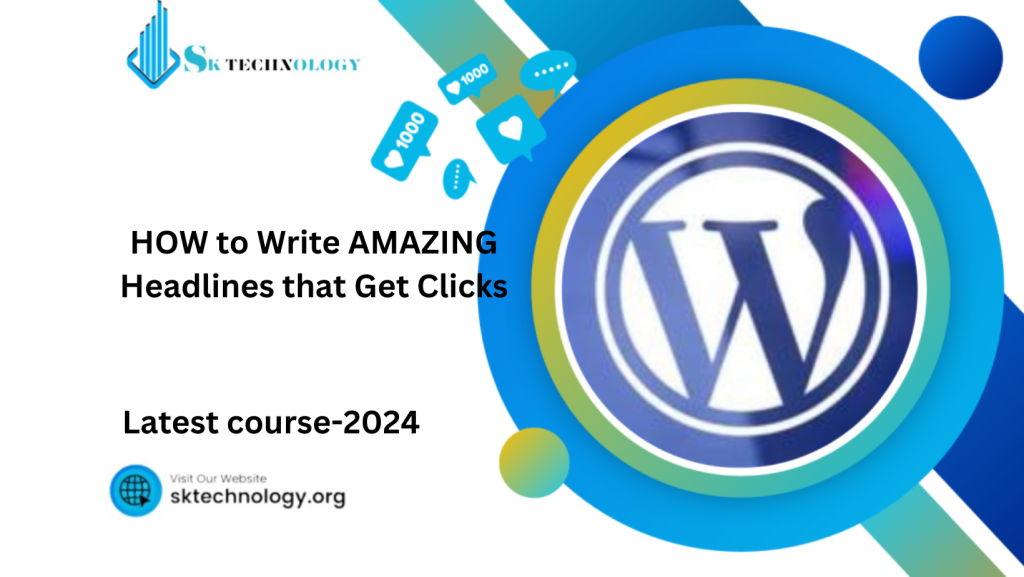Introduction to Write AMAZING Headlines
Headlines are the first impression your content makes. Whether it’s an article, blog post, or social media update, the headline often determines whether someone clicks on your content. In the digital world, your headline is like the front door to your house—if it doesn’t look appealing, people might pass it by. But what makes a headline compelling enough to get clicks?
Let’s dive into some proven strategies for writing headlines that capture attention and boost engagement.

What Makes a Headline Compelling?
Clarity
One of the most important factors is clarity. Your headline should tell the reader exactly what they can expect if they click on the link. Avoid vague or confusing wording—be straightforward.
Emotional Triggers
A compelling headline often evokes emotion. Whether it’s curiosity, excitement, or urgency, emotional triggers draw readers in. Words like “amazing,” “shocking,” or “incredible” can stir up feelings and make the reader more likely to engage.
Power Words
Power words are phrases that are proven to increase engagement. Words like “free,” “secret,” or “instant” create a sense of urgency or exclusivity, making readers more curious to learn more.
Understanding Your Audience
Who Are You Writing For?
Knowing your audience is crucial for crafting headlines that resonate. What are their interests, challenges, or desires? Tailor your headlines to speak directly to their needs.
Tailoring Headlines to Reader’s Interests
If your audience is looking for quick tips or solutions to specific problems, your headlines should reflect that. Think about what your target readers would search for and match their intent.
The Role of Keywords in Headlines
SEO and Keywords
Search engines value well-optimized headlines. Incorporating keywords into your headline not only improves SEO but also aligns your content with what users are actively searching for.
How to Effectively Use Keywords
You don’t need to stuff your headlines with keywords, but placing them naturally can significantly impact your ranking on search engines. Make sure the headline reads smoothly while including relevant terms.
Types of Headlines That Get Clicks
List Headlines
List headlines (like “Top 10 Ways to…”) are popular because they promise an easy-to-digest format. Readers know what to expect and are more likely to click.
How-To Headlines
How-to headlines offer a solution. People want answers, and this type of headline delivers by showing how your content can help solve their problems.
Question-Based Headlines
Headlines that ask questions engage curiosity. They make readers think, “I want to know the answer.”
Provocative or Controversial Headlines
Sometimes, sparking a little controversy can boost engagement. Be careful not to cross the line into clickbait, but a provocative headline can stir emotions and lead to more clicks.
Using Numbers to Boost Engagement
Why Numbers Work
Numbers stand out and offer a clear structure. A headline like “7 Ways to Improve Your Website” promises actionable advice in a format that’s easy to skim.
Examples of Headlines with Numbers
- “5 Easy Steps to Better Sleep”
- “10 Tips for Writing Killer Copy”
Incorporating Power Words

What Are Power Words?
Power words are emotionally charged words that prompt readers to take action. Think of words like “ultimate,” “effortless,” or “guaranteed.”
How Power Words Influence Clicks
These words create a sense of urgency or exclusivity, making readers feel that they’re getting something valuable by clicking.
Creating a Sense of Urgency
Time-Limited Offers
Headlines that hint at limited availability or exclusive content often encourage readers to act fast. Words like “limited time,” “hurry,” or “ends soon” can significantly increase clicks.
How Urgency Impacts Reader Behavior
Urgency compels readers to make a decision on the spot. If they feel like they might miss out, they’re more likely to click through immediately.
Headlines That Promise Solutions
Solving Problems Through Headlines
People click on headlines that promise to solve their problems. Use your headline to offer a solution to a common issue your audience faces.
The Value of a Solution-Driven Headline
When a headline guarantees an answer or a way to overcome a challenge, readers are more inclined to engage because it feels directly beneficial to them.
Length of a Good Headline
Ideal Character Count for SEO
The ideal length of a headline is between 50 and 60 characters. This is long enough to convey your message while still being optimized for search engines.
Balancing Brevity with Information
It’s important to provide enough information without overloading the reader. Keep it concise but informative.
A/B Testing Your Headlines
Why A/B Testing is Important
You might think you’ve nailed the perfect headline, but A/B testing can prove otherwise. Testing different variations helps you understand what resonates best with your audience.
Tools for Testing Headlines
There are several tools available, such as Google Optimize or Optimizely, that make A/B testing headlines easy and insightful.
Avoiding Clickbait
Why Clickbait Damages Trust
Clickbait may get the clicks, but it can also damage your credibility. If your headline promises one thing and your content doesn’t deliver, readers won’t return.
Striking a Balance Between Curiosity and Honesty
You want to entice your readers with an intriguing headline, but it’s important to remain honest about what your content delivers.
Optimizing Headlines for Social Media
How Social Media Headlines Differ
Social media headlines often need to be shorter and more direct. You have limited space and need to grab attention quickly.
Tips for Writing Shareable Headlines
Use clear language, strong verbs, and emotional appeal to create headlines that people will want to share.
Tools to Help Craft Headlines
Headline Analyzers
There are many tools available to help refine your headlines. Headline analyzers like CoSchedule or Sharethrough can help you gauge how effective your headline will be.
Free Tools to Improve Your Headline Writing
You can use tools like Hemingway Editor or Grammarly to ensure your headlines are concise and grammatically correct.
Conclusion
Write AMAZING Headlines: By understanding your audience, using the right keywords, and crafting clear, engaging, and emotional headlines, you can drastically increase your click-through rates. Keep testing, refining, and learning, and soon, you’ll master the skill of headline writing.
FAQs
- How long should a headline be for SEO?
Ideally, a headline should be between 50 and 60 characters for SEO purposes. - What are power words in headlines?
Power words are emotionally charged words that can prompt readers to click, such as “free,” “amazing,” or “limited.” - Why are numbers effective in headlines?
Numbers provide structure and promise a clear, digestible format, making readers more likely to click. - What’s the danger of using clickbait?
Clickbait can damage trust. If your headline doesn’t match the content, readers are unlikely to return. - How can I A/B test my headlines?
You can use tools like Google Optimize or Optimizely to test different headline variations and see what
- How long should a headline be for SEO?


